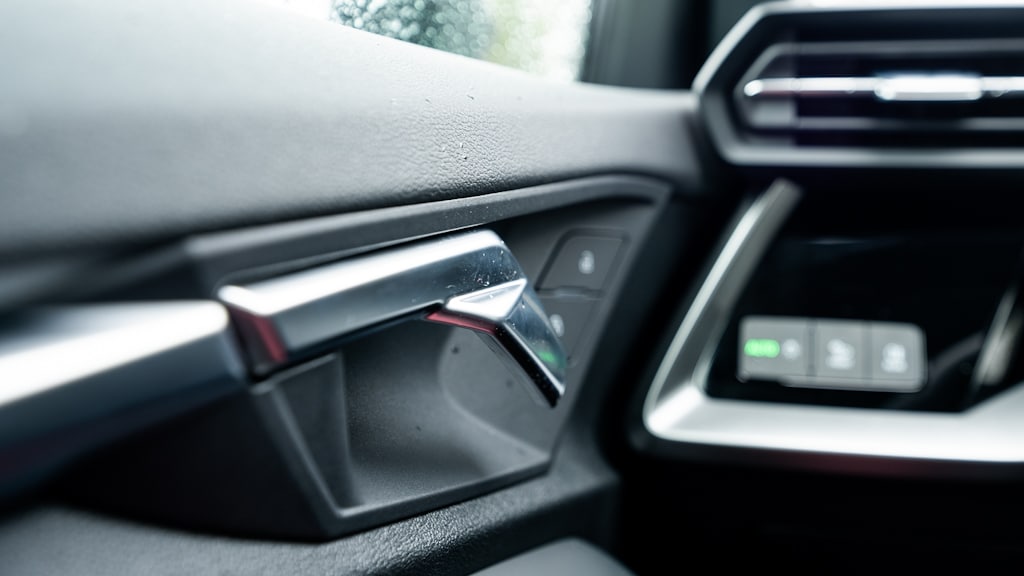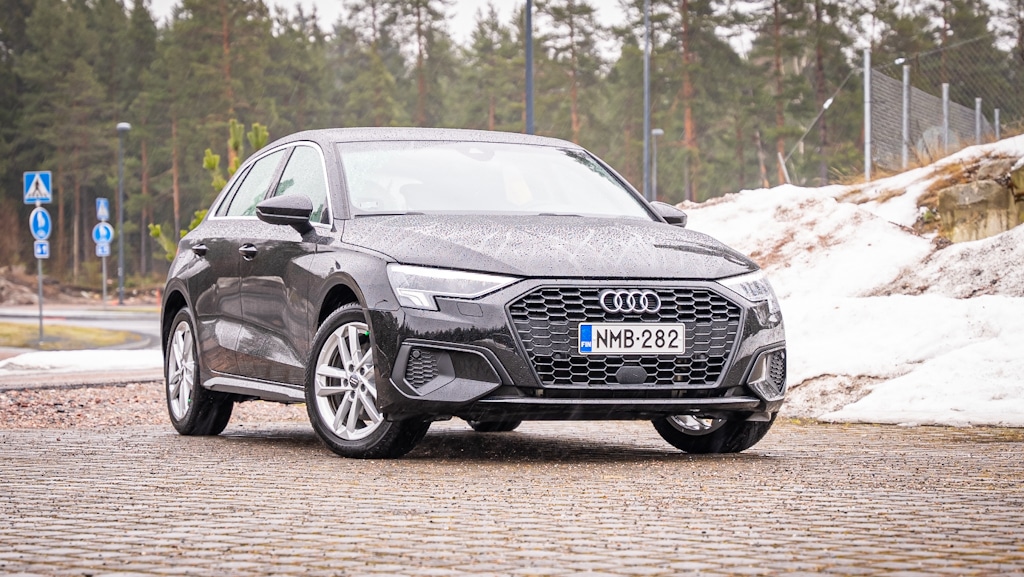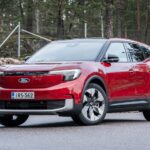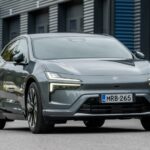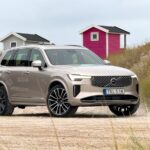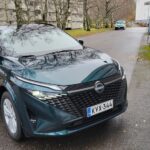The latest Audi A3 Sportback is a good-looking model, and that’s saying something. Compared to the previous generation, the new A3 doesn’t apologise for its looks – bold, wide shapes, particularly at the front, give it a larger appearance than its size, and the styling updates are significant.
The front bumper is adorned with a handsome dark-blue grille, while the honeycomb honeycomb shapes of the grille that extend to the bottom of the bumper and the new headlamps make for an undeniably sporty look.
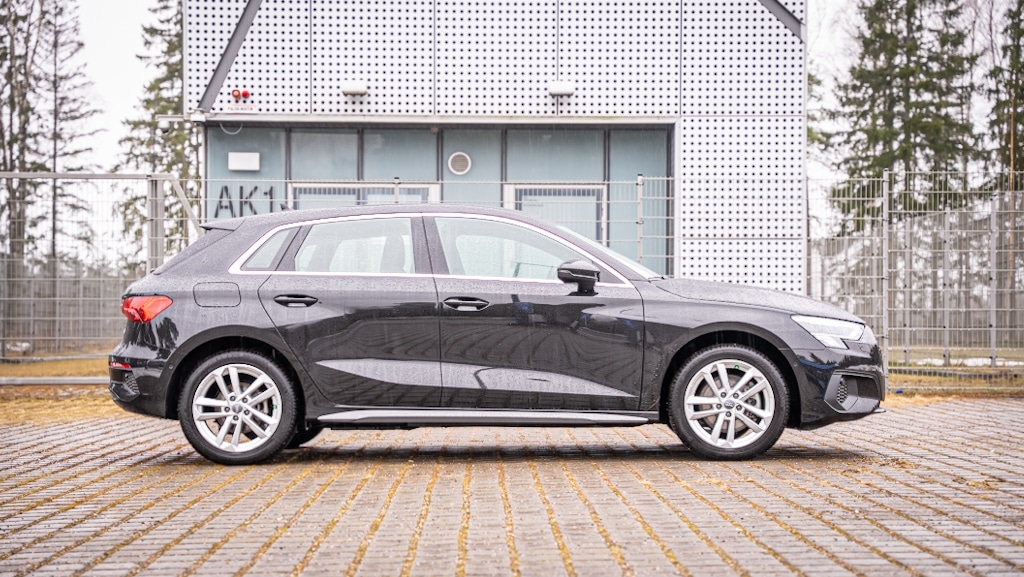
Significant styling updates are also to be found in the side profile, where the previous body style’s usual dull straight lines and light shapes have been transformed into a distinctly more personal and bold design. The new A3 is again clearly part of the current Audi family, also in terms of design.
Over 50 kilometres on electricity
As a rechargeable hybrid, the A3 even offers a surprisingly long electric driving range, given the car’s low-capacity 10.4 kWh (net) battery. Audi claims an electric range of up to 66 kilometres.
During the test drive, without saving any more electricity, a comfortable 52 kilometres were covered on a single charge in chilly spring conditions. The test drive included city and country driving. The average speed was 48 km/h and the electricity consumption was 18.9 kWh/100km.
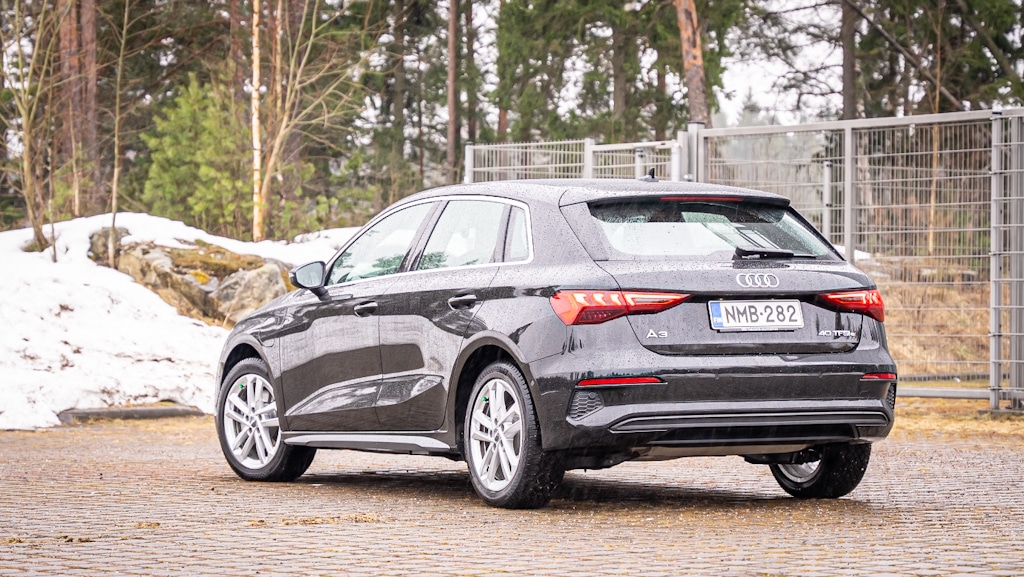
It is possible to come close to the 15.4-14.2 kWh/100km. consumption claimed by Audi. What matters more is the electricity consumption and range found in the test drive in normal everyday driving, which for the A3 seems to be at a commendable level.
The electric motor is paired with a 1.4-litre four-cylinder petrol engine. The petrol engine has a maximum power output of 110 kW and 250 Newton metres of torque. The maximum torque of the electric motor alone is a remarkable 330 Nm. The combined torque of the petrol and electric motors is limited to 350 Nm and the power output to 150 kW.
It’s small, but let’s go
If the electric range was a positive surprise, praise can also be given to the fuel economy. On the road, fuel consumption figures drop to less than five litres per 100 km with the internal combustion engine alone.
Even if the battery shows zero kilometres on departure, the car also automatically uses the electric motor for driving. The electric motor is powered by braking energy, and the seamless interplay between the engines is only reflected in the rev counter of the petrol engine and the fuel and electricity consumption readings.
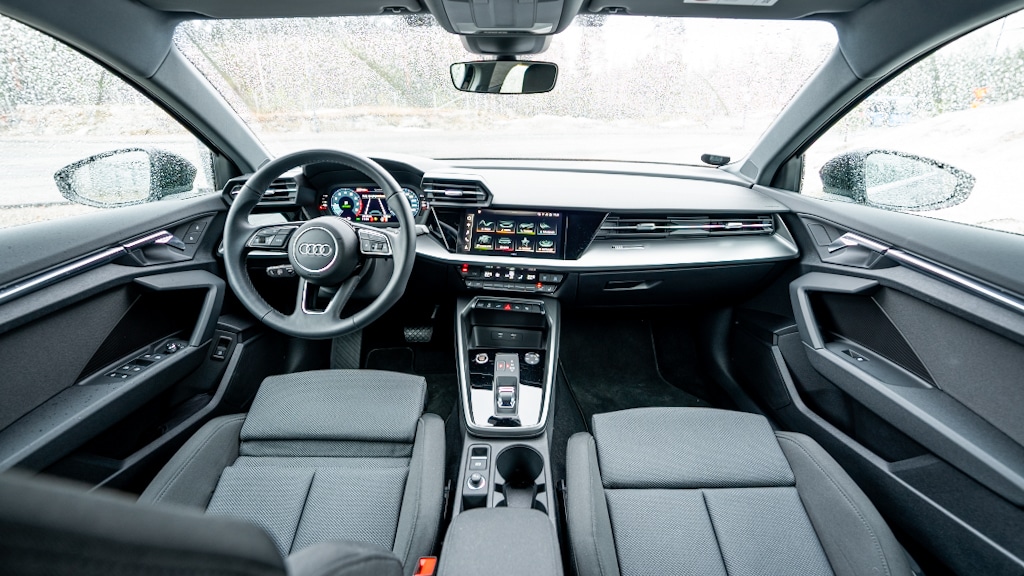
over 500 kilometres of road driving at an average hourly speed of 84 km/h, fuel consumption was 4.8 l/100 km on 17-inch friction tyres, which means that a 40-litre fuel tank can cover up to 800 kilometres on a single tank.
In city driving with the internal combustion engine alone, fuel consumption ranged between 6 and 7 litres. If you actively charge your car, you can easily achieve very low fuel consumption.
The A3 is surprisingly stable and easy to drive. The steering feel is precise, and at higher speeds the stability of the car is hardly affected. With a curb weight of just over 1600 kg, the A3 outperforms many of its larger rivals in terms of driveability and stability.
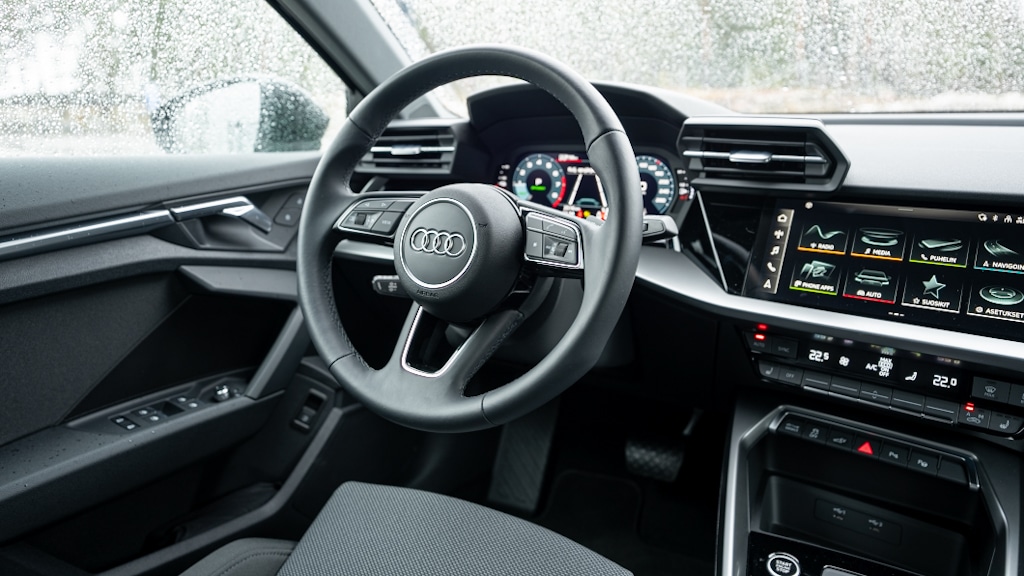
The greatest praise in terms of driveability goes to the feel of the chassis. The sporty, snappy chassis is not the highest quality in terms of feel. Sharp road bumps are occasionally felt behind the wheel as unpleasant chassis bumps, which detract from the otherwise good ride quality. On flat roads and new asphalt, the driving experience is improved by a whisker.
New and old in the cabin
Like the exterior, the design of the cabin has been completely redesigned. The sharp, angular design draws attention to the dashboard, especially around the instrument panel and door handles. The centre console has been kept minimalist, with a small ‘gear stick’ and the familiar start and volume controls, as well as wireless charging for your phone.
The instrument panel and dashboard displays are familiar from other Audi models in terms of features and colour scheme. The operating system is clear, but the touchscreen is not always fully responsive. A slight delay is occasionally experienced when scrolling between settings and tabs.
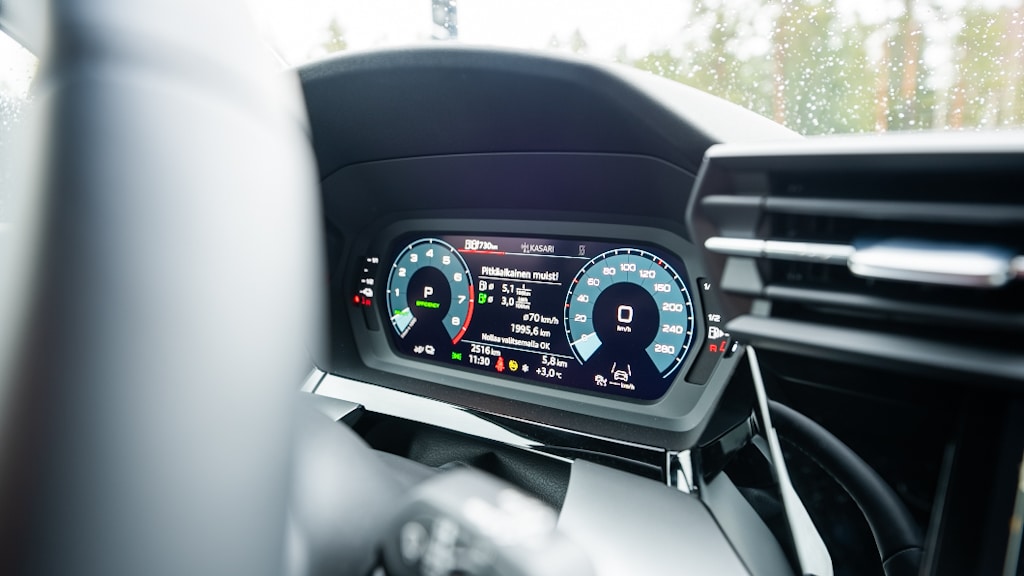
The buttons on the climate control panel below the intercom have been kept as traditional buttons, which already look dated in appearance. The good thing about traditional buttons is that they are easy to use.
All in all, the new A3 is an impressive-looking car, and larger in size. In addition to the rechargeable hybrid, there’s a wide range of other models, from gas and diesel to the S3 power version. The A3 sedan, already familiar from the previous model range, is also available.
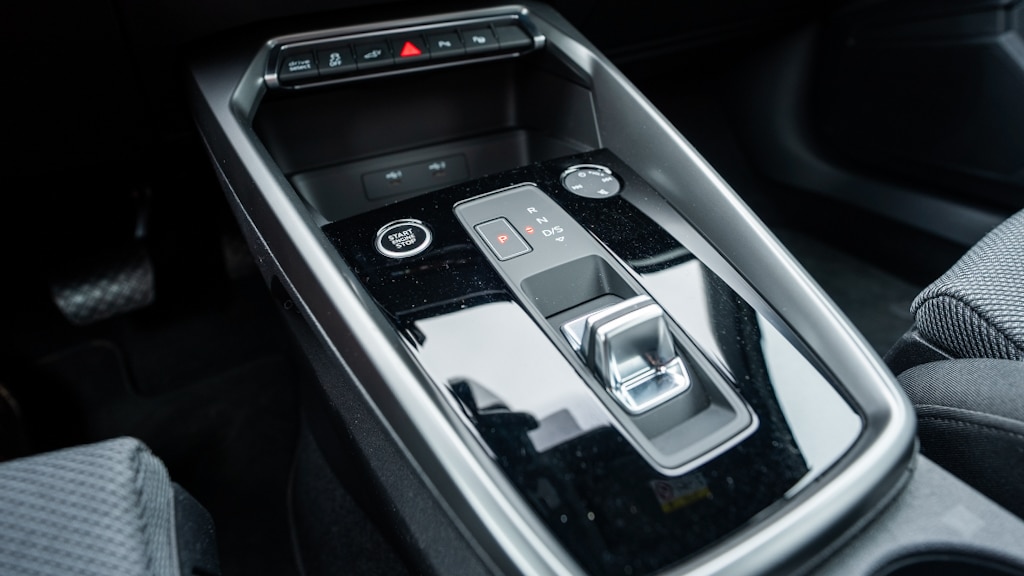
As a rechargeable hybrid, the A3 offers the best of what the electrification of internal combustion engine cars is all about for a small car – city driving is easily done with electricity and longer journeys can be covered with an internal combustion engine with low fuel consumption.
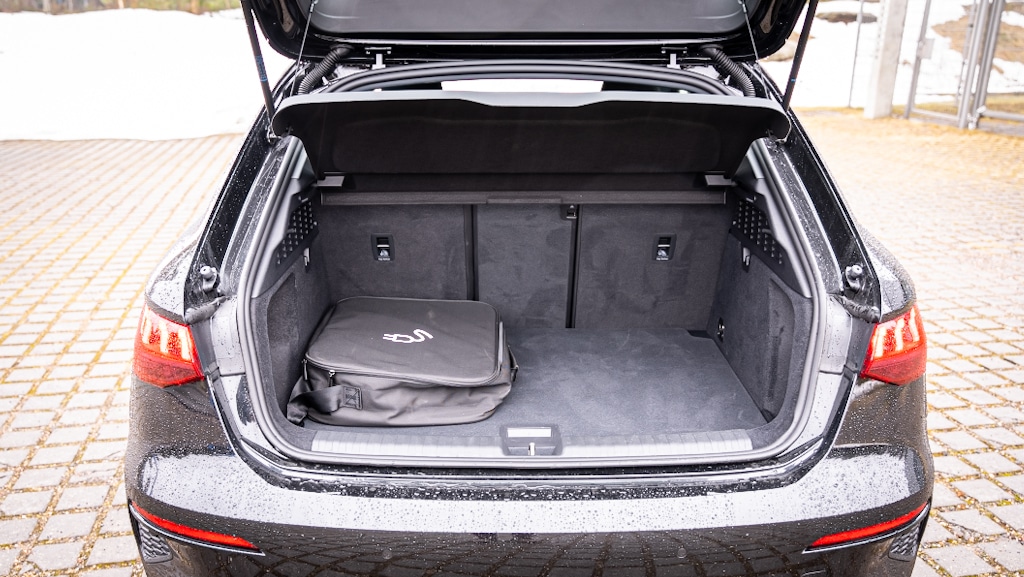
Audi A3 Sportback, Electrified Edition Business 40 TFSI
- Engine: 1395 cm³, 4-cylinder, petrol
- Combustion engine power: 147 hp / 110 kW @ 5000-6000 rpm.
- Combustion engine torque: 250 Nm. @ 1550-3500 rpm.
- Electric motor torque: 330 Nm.
- Total maximum power: 150 kW, 201 hp.
- Maximum total torque: 350 Nm.
- Driving battery capacity: 10.4 kWh
- Maximum charging power: 2,9 kW
- Declared operating range on a single charge: 66 km.
- Test-driven range on a single charge: 52 km.
- Acceleration: 7.6 sec (0-100 km/h)
- Combined consumption: 1.2-1.0 l/100km.
- CO₂ emissions: 31-24 g/km.
- Fuel consumption in test drive: 4.8-6.9 l/100km (without electric motor)
- Curb weight: 1635 kg.
- Drive mode: front-wheel drive
- Boot space: 280 l.
- Towing capacity: 1400 kg.
- Starting price: €39 502
- Starting price (A3 30 TFSI MHEV S tronic): 30 343 euro
